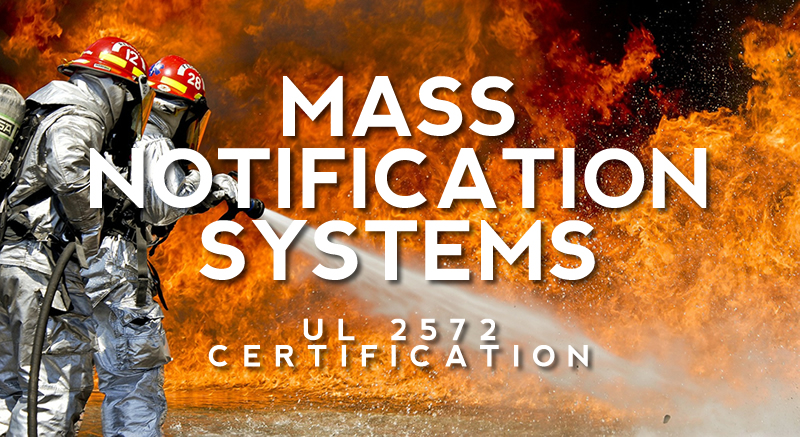In recent years, there have been multiple catastrophic events that remind us how vital disaster preparedness is in these scenarios. A mass notification system is one of the integral components that ensure timely notification and reaction to a wide variety of risks. Indeed, these systems are essential for fire emergencies, inclement weather, and terrorist attacks.
When considering the installation of a mass notification system, there are many important factors to consider. Present day technology features have made it possible for messages to be transmitted almost instantaneously via voice, text, emails, and other digital channels.
What is a Mass Notification System and why are they necessary?
Mass notification systems have been used for many years to warn people of future risks. In the past, some alarms and sirens were used to spread messages regarding fires and tornados. The definition of a mass communication system has evolved, but the essential functions have remained the same. These systems are essentially communication platforms that are designed to spread a message to people as quickly as possible.
For such a system to be capable, operators need to be able to prepare a message and spread it to all occupants of the premises in the shortest amount of time. Mass notification often ensures that people and property are made aware of threatening situations as soon as possible. They notify the occupants of a digital building about an impending occurrence, and can even provide further information regarding the nature of an emergency situation and how people should respond.
From indoor live/pre-recorded messages delivered over a PA system to emergency email alerts, a mass communication system can provide a versatile and useful means of spreading an urgent message quickly.
A well designed Mass Notification Emergency Communication (MNEC) solution will ensure that all intended audiences are well informed and directed to safety through any and all means possible. DataStrait Networks partners with Lencore to offer the latest in mass notification system infrastructure.
Common components & functions of a Mass Notification System
There are specific core components that every mass communication system should have. During the design phase, the following steps are critical towards improving the use value and operational efficiency of every system.
Consulting all stakeholders
For any mass notification system to be effective, it needs a design that incorporates input from multiple stakeholders. Indeed, the messages generated by the system should be efficiently received by the target audience and contain information that is digestible and actionable. Due to the wide variety of risks involved in a building at any particular time, a multifaceted approach is necessary. It requires the consultation of multiple parties, from building fire safety personnel to weather and climate professionals.
Also, any building security personnel also play an essential role in the operation of the system. Building security personnel understand best the daily operations of the building and can provide critical advice on what guidelines you can put in place.
Determining the best interface to use
Interfaces also affect the design and effectiveness of a mass notification system. Weighing all interface options available is a vital vetting step of a mass notification system. Electrical systems are versatile and can be used to send out emails, alarms, text messages, and other signal methodologies.
There are also building management systems that integrate multiple components of the building to the notification system. For example, lights and doors can be activated to operate in a particular manner when the system is activated. In particular, lights can be activated to turn on during an emergency to make evacuation easier. Emergency doors can also be automatically unlocked to facilitate an easier exit.
Phone systems come in handy as part of a mass notification system for providing immediate alerts. It is these systems that can send out instant messages, voice calls, or other automated alerts directly to people’s phones. The interface ultimately determines the use value of the entire system once it’s up and running.
Designing an operational framework
The operational framework refers to the main features within a mass notification system. There are multiple options to explore, including voice messages, graphics, sound, or a combination of both.
Defining the interface before the framework is necessary. The interface forms the basis upon which features such as voice, text, and networking can be included.
How the UL 2572 standard/certification applies to Mass Notification Systems
The UL 2572 certification refers to a set of standards that cover mass notification system products. They outline what these products should be capable of doing in the event of an emergency. The guidelines stipulate the standard for real-time transmission of critical information within buildings and the outdoors to relay emergency information. UL2572 specifies interface requirements such as audible signals and voice features. Also, the standards outline fire system requirements as well as other disaster response mechanisms.
It is, therefore, essential for buildings and other similar premises to ensure UL 2572 compliance in their mass notification systems. This compliance ensures the protection of people and property on the premises.

